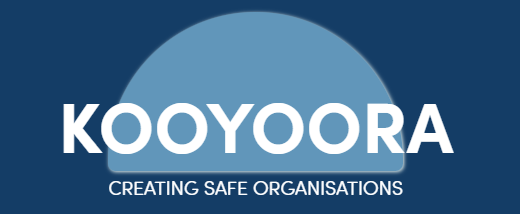Rethink Your Hiring to Protect Children in Care
Is your hiring process truly building a culture of safety? Learn how to move beyond standard questions to better protect children in your organisation.
Beyond the Resume: Hiring for a Culture of Safety
When you hire someone to work alongside children and young people, whether in a childcare centre, a classroom, or a community program what are you truly looking for? Qualifications are vital. Experience is critical. But how do you screen for the intangible qualities that form the bedrock of a safe environment? How do you measure a candidate's empathy under pressure, their courage to challenge the status quo, or their unwavering commitment to a child's wellbeing?
For too long, industries focused on children and young people have relied on hiring practices that vet for skills but often miss the essential mindset.
It’s time to ask a more profound question: Is your hiring process just filling a position, or is it actively building a culture of safety that protects every child you serve?
From Compliance to a Cultural Calling
Many organisations in childcare, education, and youth services use interview questions that have become routine. "Why do you enjoy working with children?" or "How do you handle challenging behaviour?" These questions are well-intentioned, but they often elicit rehearsed, ideal answers. They reveal what a candidate knows they should say, not how they will actually behave when faced with a complex, real-world ethical dilemma.
This gap between the scripted answer and authentic action creates a significant risk. A reactive, compliance-driven approach to safety is no longer sufficient. To truly safeguard children and young people, we need a proactive method that ensures every new hire will be an active guardian of a safe and transparent culture.
A New Framework for Hiring
Shifting your focus from qualifications to character is key. This means assessing how a candidate’s past actions and core beliefs align with a culture of psychological safety. The Kooyoora framework for culture change provides a powerful model, emphasising proactive prevention, self-reflection, and shared accountability. Adopting this mindset means redesigning your interview to uncover a candidate’s understanding of power dynamics, their capacity for self-awareness, and their commitment to collaborative safety. In childcare this can be an important foundational step for building team capacity.
“Developing an internal culture of psychological safety ….builds a foundation for transformational practice with children, young people, and families. Fostering psychological safety on teams includes creating the environment to support vulnerable, authentic, and brave contributions from members of the team. ” Psychological Safety in a Child Welfare Context
Reimagining Your Interview Questions
What if you replaced your standard questions with ones designed to probe deeper? Imagine the insights you could gain.
Instead of: "Why do you want to work with children?"
Try asking: "Describe a time when a child’s situation genuinely challenged you emotionally. How did you process your own feelings in that moment to ensure you responded in a supportive and professional manner?"
Why it works: This question moves beyond surface-level passion to explore emotional regulation, self-awareness, and professional empathy. It reveals a candidate's ability to remain a source of stability, a vital component of psychological safety.
Instead of: "How do you ensure children in your care are safe?"
Try asking: "Can you give an example of a time you identified a potential safety risk that wasn't covered by existing policies? What steps did you take, and who did you involve in addressing it?"
Why it works: This tests for proactive problem-solving and a sense of shared responsibility, not just rule-following. It aligns with the principle of empowering staff to contribute to continuous improvement, showing they see safety as a dynamic practice, not a static checklist.
Instead of: "Do you prefer working alone or with a team?"
Try asking: "Tell us about a time you disagreed with a colleague’s approach to a child or situation. How did you handle it to ensure the child's wellbeing and dignity remained the absolute priority?"
Why it works: This directly assesses a candidate’s ability to engage in open, safe communication and uphold their duty of care, even when it’s uncomfortable. It reveals their capacity to navigate professional conflict constructively a cornerstone of a healthy safeguarding culture where silence is not an option.
The Ripple Effect of Hiring for Culture
When you start hiring for a safety mindset, the benefits can create a positive ripple effect throughout the organisation. New hires selected for their cultural alignment are more likely to speak up about concerns, collaborate on solutions, and engage in reflective practice.
This creates a virtuous cycle. A more proactive safety culture can take root, where potential risks are identified before they can escalate. Staff feel more empowered and psychologically safe, leading to higher retention and a stronger sense of collective purpose. Your entire organisation becomes more resilient, transparent, and trustworthy in the eyes of the children and families you serve.
Your Next Step: Ask Different Questions
Rethinking your hiring process is a transformative act. It declares that culture is not an afterthought; it is the foundation of everything you do. Who you hire is just as important as the policies you write. By asking deeper, behaviour-based questions, you can build a team that doesn’t just comply with safety rules but actively champions a culture of safeguarding from the ground up.
The lesson is clear: to build a truly safe environment for children, you must start by hiring for a safety mindset.
Download the Poster
To keep this information front and centre download our poster (PDF file)
Kooyoora Abuse Prevention Framework Resources
Kooyoora’s Abuse Prevention Through Culture Change Framework helps organisations safeguard against abuse, harassment and misconduct.
Informed by research (literature review), lived experience, and sector expertise, the framework offers practical tools to reflect on organisational culture and strengthen safeguarding practices.
The following resources offer background information and detailed guidance to help your organisation implement the framework. All documents are freely available.




